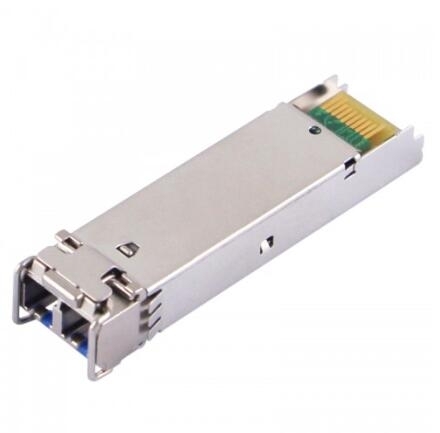- Related articles
- All Cisco MFEBX1's information (Specs, Datasheet PDF, Compatibility matrix)
- All Cisco XENPAK-10GB-LR+'s information (List price, Specs, Datasheet PDF, Compatibility m
- EoS & EoL Announcement for the Cisco FourX CFP to Four SFP+ Converter Module
- Optical Transceivers for Cisco SG500X-48P-K9-G5 Switch
- All Cisco GLC-FE-100BX-U's information (List price, Specs, Datasheet PDF, Compatibility ma
- Optical Transceivers for Cisco WS-C2960S-F24TS-L Switch
- What 802.3 Standard Originally Defined Poe Functionality?
- All Cisco SFP-OC12-IR1's information (List price, Specs, Datasheet PDF, Compatibility matr
- Used In 10GBASE-LR Standard Optical Transceiver Models
- What are SFP ports?

Definition:
QSFP is short for quad (4-channel) small form-factor pluggable. It is a compact, hot-pluggable transceiver also used for data communications applications. QSFP+ evolved as the standard to support 10Gb/s data rates per SFF-8436. Compared with QSFP+, QSFP products support Quarter Small Form-factor Pluggable with the different data rate so that there is no change in the product solution. Nowadays, QSFP+ gradually replaces QSFP and is widely used by people as it can provide higher bandwidth.
A gigabit interface converter (GBIC) is a standard for transceivers, commonly used with Gigabit Ethernet and fibre channel in the 2000s.[citation needed] By offering a standard, hot swappable electrical interface, one gigabit port can support a wide range of physical media, from copper to long-wave single-mode optical fiber, at lengths of hundreds of kilometers.
Difference between QSFP+ and GBIC:
GBIC
- Gigabit Ethernet 1000base-SX/LX/XD/ZX at 1.25Gbs/s Optional
- Wavelength: 850nm/1310nm/1550nm
- Single +3.3V or +5V power supply
- Ho-pluggable Duplex SC
- Eye safety, meet laser class 1, compliant with IEC60825-1
- Compliant with Tecordia (Bellcore) GR-468-CORE
- Compliant with specification for IEEE-802.3
- Compliant with ANSI spec. for Fiber channel applications at 1.06Gb/s
QSFP+
- QSFP+ MSA, SFF-8436 compatible
- Four independently addressable transmit and receive channels
- Highly compact: savings of 60% on edge and board usage compared to four comparable SFP+ modules
- Electrically hot-pluggable
- XFP-like latch mechanism for ease-of-insertion
- Digital Diagnostics Monitoring Interface. allows customer management and monitoring of key modules parameters, analogous to SFP+
- Optical connectivity via industry standard MPO/MTP terminated fiber ribbon
Difference between SFP and GBIC:
In order to interconnect a fiber optic medium into a motherboard, you need to have a connector like the GBIC or SFP. “GBIC” stands for “Gigabit Interface Converter” and was quite popular in the 1990s. It served as a standard way of connecting to different media like copper and fiber optic cables. In contrast, “SFP” stands for “Small Form-Factor Pluggable,” which also serves the very same purpose as GBIC. The main difference between GBIC and SFP is their size. SFP is considerably smaller than GBIC.
The difference in size is very desirable for many people, especially for those who deal with lots of them, because it will take up a lot less space. Considering that space in a server location is quite limited, using SFP lets you put more within one rack unit than if you used GBIC. Because of this single difference, SFP rapidly gained popularity with administrators who want to maximize their space. As SFP became more popular, GBIC also fell out of favor. Nowadays, GBIC is considered to be obsolete, and you would be hard pressed to find vendors that still carry equipment that is compatible with GBIC. SFP is still widely being used nowadays but is also under pressure from newer standards like SFP+.
Conclusion:
QSFP+ is an evolution of QSFP to support four 10 Gbit/sec channels carrying 10 Gigabit Ethernet, 10GFC FiberChannel, or QDR InfiniBand. The 4 channels can also be combined into a single 40 Gigabit Ethernet link. GBIC is the "GigaBit Interface Connector", and it is a little device that knows how to translate SX, LX, LH, etc., and or other types of gigabit signals (such as over copper), into a common format. GBIC connectors plug into slots in switches/routers, and are thus ways of changing the interface capabilities of the switches/routers without having to get new boards or replacing the switches/routers. They are, in a sense, media convertors.























































